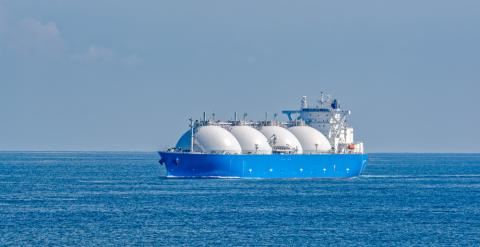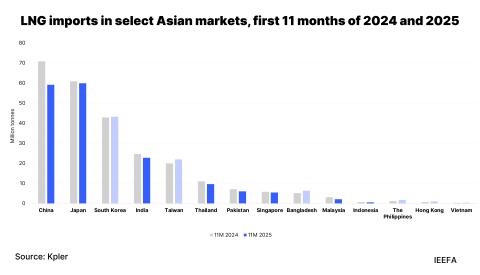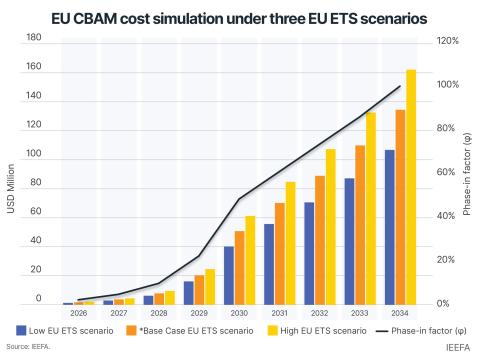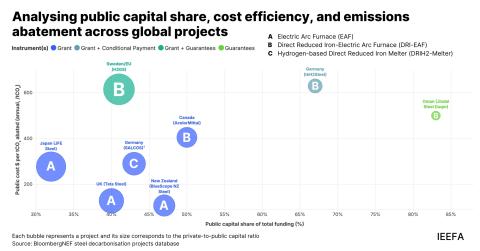Blue seas and green electrons: Powering India’s AI data centres

Key Findings
The expected surge in demand for energy and water as the country emerges as a global data centre hub could complicate India’s decarbonisation plans for its economy.
Proximity to near-shore wind and solar generation and energy storage facilities can significantly reduce transmission infrastructure costs, energy losses and right-of-way land acquisition issues for data centres.
As for the cooling requirements for data centres, coastal areas offer an abundant resource in the form of seawater, which can be used without desalination.
As renewable energy projects are modular, they can be scaled up to match the rate of data centre growth.
The increase in data consumption, computing capacity, digitalisation, cloud migration and, above all, the massive scale of Artificial Intelligence (AI) adoption has propelled the growth of data centres worldwide. The surge in new capacity is not only in developed countries; emerging market economies are also a part of this data-centre expansion story. India, the software, IT and analytical services hub, will add many data centres in coming years.
Data centres and climate change intertwined
Data centres consume vast amounts of electricity and water, directly and indirectly. The International Energy Agency (IEA) estimates they consumed about 1-1.5% of the world's electricity (~300 terawatt hours/TWh) in 2022, and this can be expected to grow to 8% by 2030. Most of the incremental electricity demand is for artificial usage (AI). A recent study by Nomura found India’s data centre installed capacity is about 960 megawatts (MW) and could increase to as much as 9.2 gigawatts (GW) in the optimistic scenario – a whopping ninefold expansion. Nomura estimates data centres consume 0.5% of India’s total electricity usage, which could swell to 3% by 2030. On a similar scale, data centres consume a massive amount of water to cool equipment. In the US, a mid-sized data centre consumes 300,000 gallons (1.14 megalitres) of water daily, the same volume as 100,000 homes.
India’s emergence as a major global data centre is expected to drive exponential growth in demand for energy and water in an already constrained supply-side ecosystem. The surge in energy demand, often met by fossil fuels, could complicate India’s decarbonisation plans for its economy. Moreover, the massive increase in water demand from new data centres in urban and suburban areas will add pressure to cities already facing water stress. It will also have cascade impacts on other sectors such as agriculture and industry.
Data central: location matters
AI data centre complexes are expected to vie for space around India’s global capability centres (GCC) – Bengaluru, Mumbai, Chennai, Hyderabad, Pune and the National Capital Region (NCR). The IEA states that clustering data centres together benefits centre operators, optic-fibre network providers and consumers, especially those who need near real-time and quick access to data such as financial services and healthcare applications. However, this has substantial implications for local management of power and water. Thus, location decisions for data centres must be made carefully to align with the country’s rapid, equitable and sustainable development plan. Appropriate positioning of data centres is the key to realise the true potential of India’s computing capability while balancing environmental objectives.
Coast is clear to power the boom
India’s coastal regions offer many advantages as a strategic location for new data centres. Proximity to near-shore wind and solar generation and energy storage facilities can significantly reduce transmission infrastructure costs, energy losses and right-of-way land acquisition issues for data centres. This also fits perfectly with the country’s new energy expansion roadmap. The relatively moderate temperature ranges in India’s coastal regions could also reduce data centres’ energy and water demands. Moreover, as renewable energy projects are modular, they can be rapidly scaled up to match the rate of data centre growth. Energy flows can be ring-fenced through the spatial co-location of data centres and the associated power infrastructure, avoiding additional stress on local distribution grids. For such an energy mix to thrive in India, coastal regions offer a distinct value proposition for co-locating data centres and allied facilities. When addressing the cooling requirements for data centres, coastal areas offer abundant seawater supply, and it can be used without desalination to cool data centres. Microsoft has gone a step further, successfully trialling an underwater data centre. Apart from the National Capital Region, all of India’s emerging data centre clusters are within 300km of the coast.
What is the policy choice?
To reduce carbon emissions and water usage, large technology companies have invested in renewable energy projects, carbon trading mechanisms and energy and water efficiency measures with vigour, especially in developed countries. Some tech giants are also exploring small modular nuclear reactors (SMR) to complement renewable energy.
However, initiatives by individual companies alone will not be enough to achieve India’s desired decarbonisation goals. In the initial stages, the public sector can partner with private players to set up turnkey data centre projects in coastal areas to complement the development of SMR and offshore and floating wind/solar projects. A smart combination of incentives and penalties can then nudge companies to prioritise coastal areas while crafting the future of India’s data centres, such as increasing water costs for data-centre applications in water-scarce regions and incentivising solar/wind/hybrid projects. A refreshed framework for granting environmental clearances in India’s eco-sensitive coastal zones will expedite this movement. To foster partnerships across startups, academia and industry, pilot initiatives through the Make in India scheme can allow for the cross-pollination of ideas that can weave together two global megatrends of our times: data centres and climate action.
As a step towards marrying India’s IT prowess with its clean energy ambitions and water conservation efforts, the country must build an enabling ecosystem that promotes green data centres that create high-paying jobs for Indians.
This article was first published in Outlook Business.

















